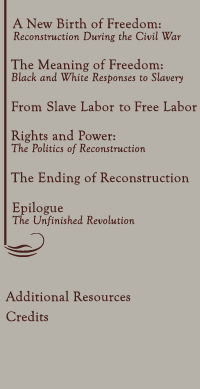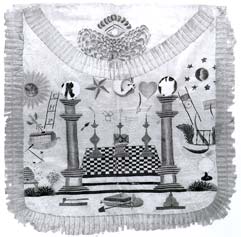




In 1851, Andrew Johnson, then a U.S. Congressman, became a Mason. Perhaps his lifelong devotion to the order reflected his aspirations to rise above his humble origins and the pride he took in doing so.
The symbols on Johnson's ceremonial apron indicate that he had attained a high rank in the fraternal order.
Copyright
2003
